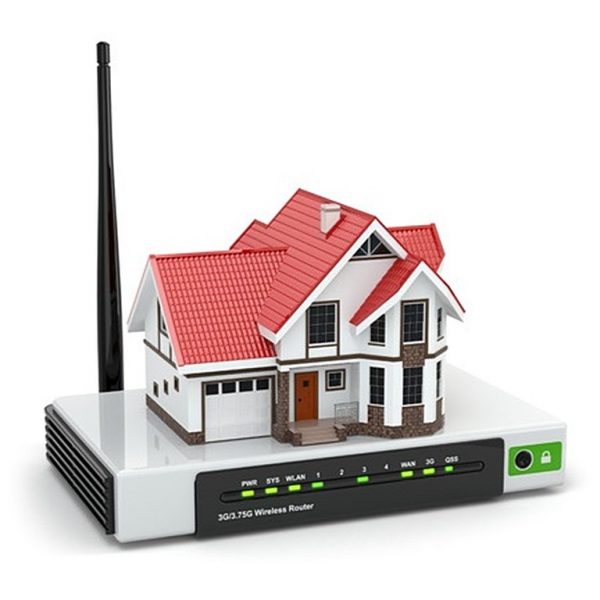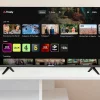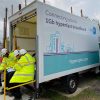Fixed UK Broadband Subscribers Predicted to Fall by 250,000 in 2025

A recent study from New Street Research has predicted that the UK will lose around 250,000 subscribers to fixed broadband services this year, which would mark “the first time there has ever been a decline” in the market. Competition from Starlink (satellite), fixed wireless and mobile broadband rivals are said to be the main cause.
The study indicates that one of the key changes taking place reflects the growth in mobile-only households, where factors like the cost-of-living crisis and improvements in the performance of 4G/5G mobile networks are causing more people to save money by sharing their Smartphone’s mobile broadband (Tethering / WiFi Hotspot etc.) connection instead of taking a fixed line.
The issue is one that Openreach’s (BT) Deputy CEO, Katie Milligan, similarly touched on earlier in the week when discussing the operator’s own ongoing decline in broadband lines (here). As a related report on Fierce Network also points out, data from Point Topic shows fixed operators shedding a net 14,000 broadband subscribers in Q2 2025, which was actually an improvement on the 88,000 net losses in Q1.
Advertisement
However, we should point out that Ofcom’s most recent Telecoms Data Tables update shows that there were 29.2 million fixed broadband lines at the end of Q1 2025 (here), which is an increase of 756,000 (2.7%) year-on-year. Some 22.3m of that total were via fibre-based FTTx broadband connections (FTTC, FTTP, FTTB etc.), with the rest coming from cable (hybrid fibre coax / Virgin Media) and slow copper ADSL lines.
The number of ADSL lines decreased by 147,000 (8.0%) during the quarter and now total under 1.8m (most of these go to FTTx). But accurately tracking exactly what type of broadband connectivity everybody has at home is difficult, particularly when they switch to a mobile-only or satellite-only approach. Most people still view mobile and satellite as complementary solutions, rather than replacements, but clearly some households may be opting for a more complete switch.
The market has arguably been plateauing like this, at a high point of general saturation, for several years. But it will be interesting to see whether mobile broadband finally starts to become a bigger threat, rather than just a complement, to full fibre (FTTP) over the next few years. Some mobile operators, such as Three UK, have long championed it for fixed wireless broadband delivery, although variable performance and other connection caveats have tended to hold it back. Such issues may become less and less of a barrier as 5GSA (5G+) expands, IPv6 is deployed more widely and 6G comes on-tap.
Mark is a professional technology writer, IT consultant and computer engineer from Dorset (England), he also founded ISPreview in 1999 and enjoys analysing the latest telecoms and broadband developments. Find me on X (Twitter), Mastodon, Facebook, BlueSky, Threads.net and Linkedin.
Advertisement
Leave a Reply Cancel reply
Privacy Notice: Please note that news comments are anonymous, which means that we do NOT require you to enter any real personal details to post a message and display names can be almost anything you like (provided they do not contain offensive language or impersonate a real person's legal name). By clicking to submit a post you agree to storing your entries for comment content, display name, IP and email in our database, for as long as the post remains live.
Only the submitted name and comment will be displayed in public, while the rest will be kept private (we will never share this outside of ISPreview, regardless of whether the data is real or fake). This comment system uses submitted IP, email and website address data to spot abuse and spammers. All data is transferred via an encrypted (https secure) session.























































While I’m sure a small fraction of the people will go mobile only, but I can’t imagine it being significant.
“fixed wireless and mobile broadband rivals”
Surely, fixed wireless connections (including Starlink) should be counted as fixed, but the article suggests according to the study, these are not.
It would be interesting to know who ordered this study, currently I can only make a very educated guess and at the same time, I am having hard time trusting their findings.
Competition from Starlink (satellite), fixed wireless and mobile broadband rivals are said to be the main cause.
They (Gov, BT/OR) had 20 plus years to get started, but they didn’t, why?
Other countries managed it, why not the UK?
Now they are loosing customers while frantically trying to catchup, or in the case of some alt-nets, realising it aint simple and bugging out.
Who is going to take over the failed altnets?
The same thing has or is happening in countries that adopted FTTP earlier than the UK.
Within the UK Hull has had almost ubiquitous FTTP since 2019 but as of 2023 had a significantly higher proportion of people using wireless than the rest of the UK.
Most people are giving up fixed line to save money, very few dropping it due to lack of FTTP and be pretty odd timing given gigabit coverage is about 90% and FTTP coverage over 80% and rising.
Sorry your taxpayer subsidised FTTP was delayed again. I’m sure Openreach will fulfill it.
There will be reasons to go to alternates to FTTP, I know of one who is on an expensive 5g system to stop the kids from mithering, its expensive. When he heard OR in town, I expect him to shift back, probably for the fastest possible, as while he boasts of speeds ten times what he was getting on FTTC, he wont be able to resist 1 or poss 1.6G. Also congestion can play a big part.
Yes I know FTTP can get congestion, only seen one comment in ISP review so far, then there is the stability and latency factors to consider.
Finally, OR FTTP is UK controlled, others may not be, and may at the whim of the owner/country be removed.
Per Disgruntled’s comments, living in a FTTP desert has moved me to a 4/5G connection. Any initial concerns about stability of bandwidth, latency etc went away and after 5 years, it has seldom let me down. I work from home in a technology role and my speeds are around 10x what I’d get from fttc. Nonetheless, the moment OR decide we’re worth the trouble, or another provider, I’ll be lapping up that sweet, sweet fibre.
Presumably this report only relates to residential connections. The report implies this but does not make it explicit.
I tried to request the original research, but haven’t heard back from NSR yet. They’ve not made the report public, so I do feel like some context may be missing too.
How is this possible? Wireless BB is dependent on a strong reliable 5G signal. So many parts of the UK does not have this.
It seems fairly obvious that this is happening in places where there *is* a good cellular signal. ‘clearmind’ indeed.
This nett decline in numbers was predicted, but the numbers are a little on the high side for 2025.
It’s going to be quite a long time before wireless connections of any kind can compete with the speed and low latency of new fixed fibre connections, which will always be the gold standard. Perhaps when 6G arrives – but for now, we’re still very far behind on 5G! And Starlink is there, but still slower and pricier, not to mention the latency, which is critical for some. With 1Gbps fibre now being almost mundane and available to over 80% of the country, and much faster options already beginning to appear, the race is truly on!
The latency is comparable to FTTC and getting better. For what it is, Starlink is incredible! Perfectly viable replacement for FTTC and lower for those who want access to higher speeds.
My current EE 5G service is good enough to substitute for the fixed broadband connection.
By pairing kit with the mobile, I was able to get an internet connection last year while my broadband connection was unavailable. The bandwidth and latency are good enough that the use of a 5G wireless broadband connection had no impact on streaming.
Surely a loss of a quarter of a million fixed connections is relatively small against the total number of households/businesses with lines? And with the targets for new build homes perhaps that compensates for the losses?
No, a loss of that magnitude would have a sizeable impact on revenues across the sector. The predicted losses are also net figures, however, I think they are on the high side for 2025, with 2026 more likely to see high numbers.
What some people are forgetting here is that not everyone has a need for fixed line broadband, if they don’t stream, don’t have a computer, and all they use is their phone or a tablet, then for them, there is no need for fixed line broadband as long as they get a decent mobile signal
Exactly.
I’d be lost without my mobile phones but mobile broadband is just not suitable for much of what I do. Example: streaming is best done to a TV (a mobile or tablet sucks) and nothing comes close to fixed line broadband and its Wi-Fi for reliability and bandwidth. My broadband from Virgin Media is unlimited whilst MNOs typically enforce data caps with higher costs as well. Currently most of us have a hybrid approach by using both fixed line and mobile, and I don’t see that changing any time soon.
Decent 4G is fine for streaming. I had to do exactly that for a week when waiting for BT/OpenReach to fix a problem.
Sorry, but that is not true. The 5G services are more than good enough for streaming. All you need to do is tether your display screen to the mobile and view the product that way. You will be pushed to notice the difference.
I dropped mine a couple years ago. Live in a flat and can only get FTTC.
Why pay £30/month for an unreliable max 50Mbit/s when I get 600Mbit/s through my unlimited mobile sim for half the price.
k hurts so badly.. this poster does not know the difference between signal strength and 5G.
It has to do with a good 5G signal, not only signal strength.. “kilo-fail”